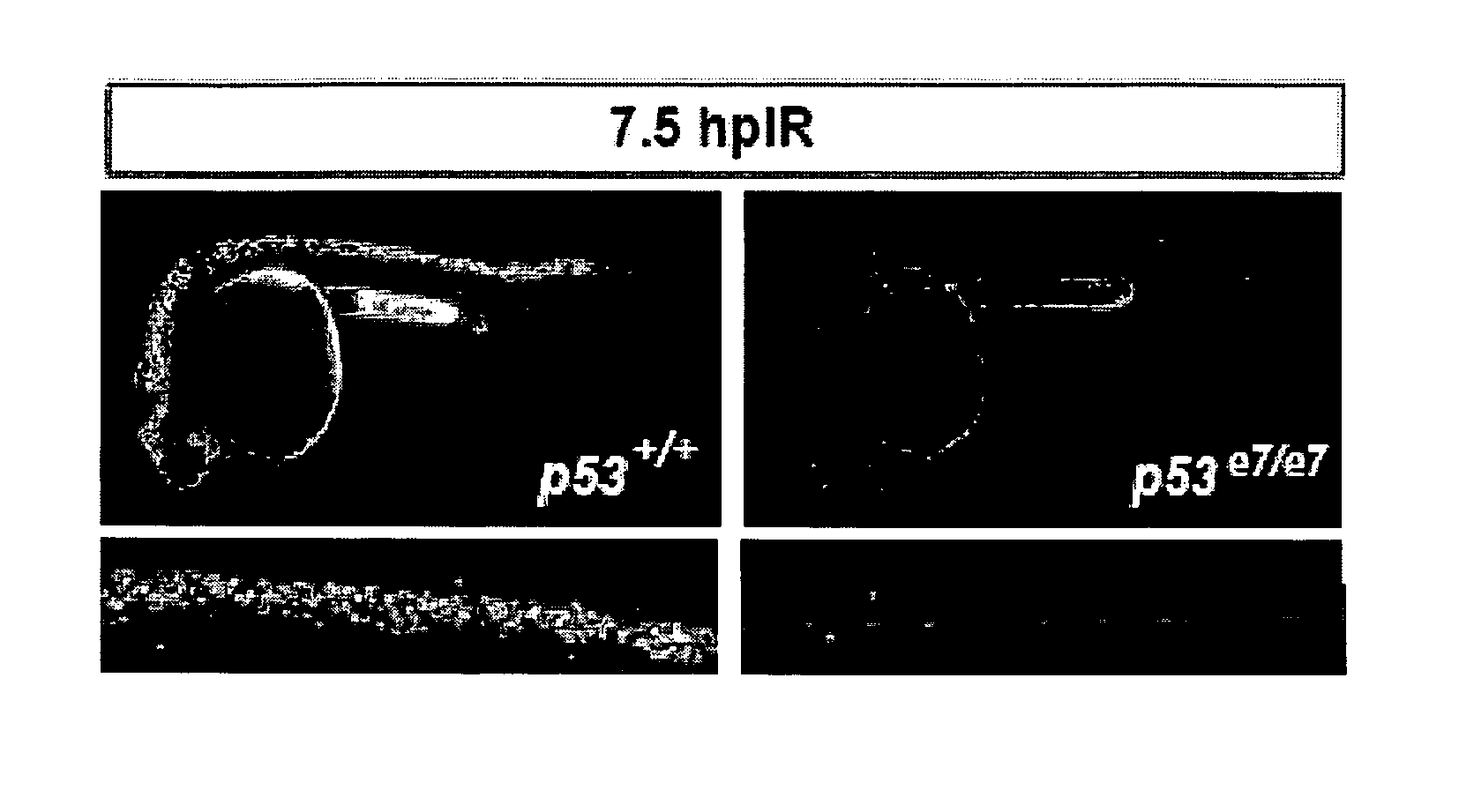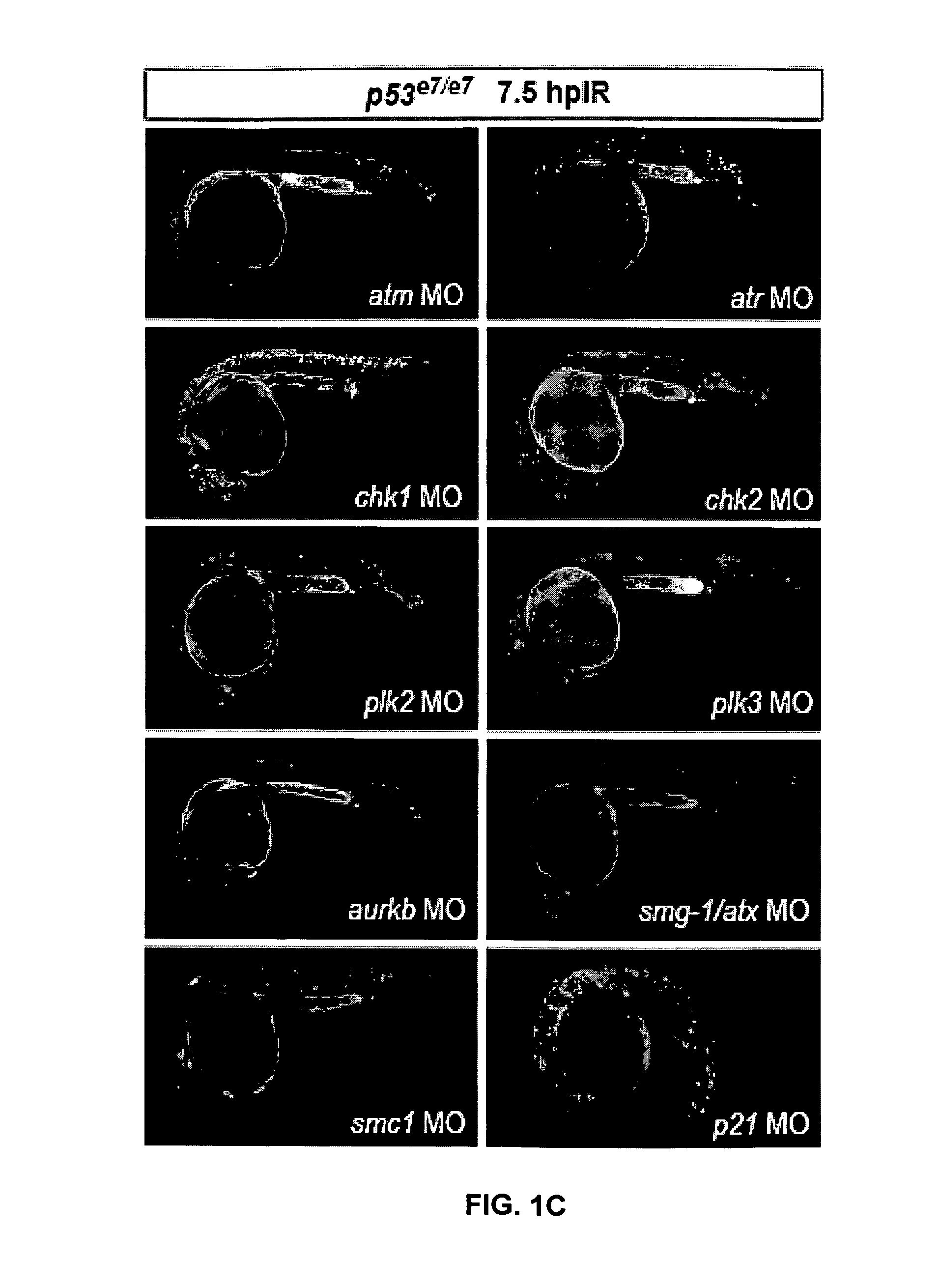Chk1 suppresses a caspase-2 apoptotic response to DNA damage that bypasses p53, bcl-2 and caspase-3
a dna damage and apoptosis technology, applied in the field of chk1 inhibitors for cancer treatment and screening methods, can solve the problems that none of these concepts have been rigorously tested in vivo in an animal model, and the p53-independent cell death program triggered by ddr kinase inactivation remains elusive, so as to achieve effective cancer treatment, effective cancer treatment, and effective treatment of cancer
- Summary
- Abstract
- Description
- Claims
- Application Information
AI Technical Summary
Benefits of technology
Problems solved by technology
Method used
Image
Examples
examples
[0080]Although defects in the p53 response to DNA damage promote malignant transformation and therapeutic resistance, little is known about p53-independent response pathways. We report that otherwise nontoxic levels of Chk1 inhibition, as obtained genetically or pharmacologically, are sufficient to restore γ-radiation-induced cell death in p53 mutant zebrafish embryos. Surprisingly, caspase-3 is not cleaved prior to DNA fragmentation, contrasting with classical intrinsic or extrinsic apoptosis. Rather, a novel apoptotic program is activated that cell-autonomously requires atm, atr and caspase-2, is insensitive to bcl-2 / xl overexpression and operates throughout the cell cycle. This Chk1-suppressed pathway defined in zebrafish is conserved in p53-deficient and BCL2-overexpressing human tumor cells radiosensitized by the Chk1 inhibitor Gö6976; the cells hyperactivate ATM, ATR and caspase-2 and trigger an apoptotic program that selectively requires caspase-2, but not caspase-3. While de...
PUM
| Property | Measurement | Unit |
|---|---|---|
| molecular weight | aaaaa | aaaaa |
| thick | aaaaa | aaaaa |
| Tg | aaaaa | aaaaa |
Abstract
Description
Claims
Application Information
 Login to View More
Login to View More - R&D
- Intellectual Property
- Life Sciences
- Materials
- Tech Scout
- Unparalleled Data Quality
- Higher Quality Content
- 60% Fewer Hallucinations
Browse by: Latest US Patents, China's latest patents, Technical Efficacy Thesaurus, Application Domain, Technology Topic, Popular Technical Reports.
© 2025 PatSnap. All rights reserved.Legal|Privacy policy|Modern Slavery Act Transparency Statement|Sitemap|About US| Contact US: help@patsnap.com



